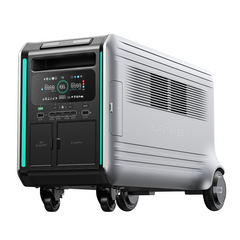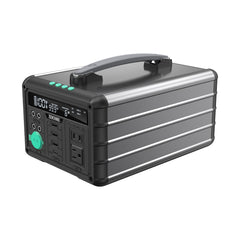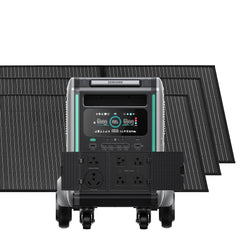Top Factors and Places to Live Off-Grid
Living off the grid has become a popular lifestyle choice for individuals seeking greater self-sufficiency and a closer connection to nature. It involves reducing reliance on public utilities and embracing sustainable alternatives. However, finding the ideal location to live off-grid is crucial for a successful and fulfilling experience.

Factors to Choosing the Best Places to Live Off Grid
1. Climate and Geography
The climate and geography of a location play a significant role in determining its suitability for off-grid living. Consider the area's average temperature, rainfall patterns, and extreme weather events. A mild climate with ample sunlight and moderate precipitation is ideal for solar power generation and sustainable agriculture.
2. Access to Resources
Living off the grid doesn't mean complete isolation from society. It's important to have access to essential resources for a comfortable life. Evaluate the availability of clean water sources such as streams, rivers, or wells. Access to timber for construction, firewood, and other building materials is also essential.
3. Renewable Energy Potential
A reliable and sustainable energy source is fundamental to off-grid living. Assess the potential for renewable energy generation in the area. Solar power is widely used, so ensure the location receives adequate sunlight throughout the year. Wind energy can be an excellent alternative in regions with consistent wind patterns.
4. Land Availability and Zoning Regulations
Research land availability and zoning regulations before committing to living off the grid in a particular area. Look for parcels of land suitable for your intended purposes, such as building a home, setting up gardens, or establishing livestock areas.
5. Water Availability and Quality
Access to a clean and reliable water source is vital for off-grid living. Assess the quality and availability of water in the area. Consider factors such as rainfall patterns, proximity to natural water sources, and the possibility of digging a well if necessary.
6. Food Production and Soil Quality
Self-sufficiency in food production is often a primary goal for those choosing an off-grid lifestyle. Evaluate the soil quality and fertility in the area to determine its suitability for growing crops or raising livestock.
Exploring Off-Grid Living Destinations
1. Tasmania, Australia
Known for its breathtaking landscapes and abundant natural resources, Tasmania is a haven for those seeking an off-grid lifestyle. With its mild climate, ample rainfall, and diverse ecosystems, Tasmania provides excellent opportunities for renewable energy generation, organic farming, and sustainable living.
2. Big Island, Hawaii, USA
The Big Island of Hawaii offers a tropical paradise for off-grid enthusiasts. With year-round warm weather, rich volcanic soil, and access to abundant sunlight, it's an ideal location for sustainable agriculture and solar energy. The island's solid off-grid community, availability of resources, and commitment to environmental conservation make it a sought-after destination for off-grid living.
3. Nosara, Costa Rica
Located on the Pacific coast of Costa Rica, Nosara is a popular destination for individuals seeking an off-grid lifestyle. Nosara is surrounded by pristine beaches, lush rainforests, and abundant wildlife and provides a serene environment for sustainable living. The region offers opportunities for organic farming, eco-tourism, and renewable energy generation, making it an attractive choice for off-grid enthusiasts.
4. The Isle of Skye, Scotland
The Isle of Skye's rugged landscapes and captivating beauty make it a desirable destination for off-grid living. With its remote location and stunning natural surroundings, this Scottish island provides a sense of tranquillity and self-sufficiency. The abundance of wind and water resources offers great potential for renewable energy. The community's commitment to sustainable living creates a supportive environment for off-grid enthusiasts.
5. The Outer Hebrides, Scotland
Stretching along the northwest coast of Scotland, the Outer Hebrides comprises a chain of islands with untouched beauty and rich cultural heritage. The islands offer a unique off-grid experience with their remote location, pristine beaches, and wild landscapes. Residents here embrace renewable energy systems, sustainable fishing practices, and traditional agricultural methods, creating a strong sense of self-reliance.
6. The Tarkine, Australia
Located in the northwestern region of Tasmania, the Tarkine is one of the largest temperate rainforests in the Southern Hemisphere. This pristine wilderness offers abundant natural resources and a diverse ecosystem, making it an attractive destination for off-grid living. With its untouched beauty and secluded location, the Tarkine provides an opportunity to reconnect with nature and adopt a sustainable lifestyle.
7. The Karoo, South Africa
The semi-desert region of the Karoo in South Africa offers a unique off-grid living experience. Its vast open spaces, clear skies, and minimal light pollution make it an ideal location for stargazers and nature lovers. The region's arid climate can be challenging, but with innovative water management techniques and renewable energy systems, off-grid living is achievable in this remarkable landscape.
8. Bale Mountains, Ethiopia
For those seeking an off-grid experience in an exotic location, the Bale Mountains in Ethiopia provide a remarkable opportunity. With its diverse wildlife, stunning mountain scenery, and unique flora, this UNESCO World Heritage Site offers an unparalleled natural environment. Off-grid enthusiasts can embrace sustainable practices and immerse themselves in the rich cultural heritage of the local communities.
9. Mljet Island, Croatia
Situated in the Adriatic Sea, Mljet Island is known for its untouched nature, crystal-clear lakes, and dense forests. This serene island offers a tranquil setting for off-grid living. With its Mediterranean climate, fertile soil, and ample sunshine, it's possible to establish self-sustaining gardens and harness solar energy. The island's commitment to eco-tourism and environmental preservation further enhances the off-grid lifestyle.
10. Llano River Valley, Texas, USA
If you prefer an off-grid experience in the United States, the Llano River Valley in Texas offers natural beauty and self-sufficiency opportunities. With its arid climate, residents have embraced off-grid technologies such as solar power and rainwater harvesting. The region's wide-open spaces, diverse wildlife, and supportive off-grid community make it an appealing destination for off-grid enthusiasts.
Tips for Off-Grid Living
1. Research the location before moving
Before settling on a location, conduct a comprehensive research. Consider climate, geography, resource access, zoning regulations, and the local community. Gather as much information as possible to ensure the chosen location aligns with your off-grid living goals.
2. Ensure a reliable water source
Access to clean and reliable water is crucial for off-grid living. Evaluate the availability of water sources in your chosen location. Consider options like wells, springs, or nearby rivers and ensure they can provide a sustainable water supply for your daily needs.
3. Investigate alternative energy sources
Reliable and sustainable energy sources are vital for off-grid living. Research and invest in alternative energy solutions such as solar power, wind turbines, or hydroelectric systems. Zendure Solar Generators, as recommended, can be a great option for portable and efficient off-grid power generation.
4. Consider the cost of living off-grid
Living off-grid comes with its own set of expenses. Consider the initial setup costs, ongoing maintenance, and the cost of alternative energy systems. Factor in food production costs, water management, and waste disposal. Create a budget and ensure you have sufficient financial resources to sustain your off-grid lifestyle.
5. Choose a location suitable for food production
Self-sufficiency in food production is often a core aspect of off-grid living. Select a location where you can safely grow your food and establish sustainable gardening practices. Assess the soil quality, climate, and available space for gardens or livestock. Embrace permaculture and other regenerative agriculture techniques to maximize food production.
Embarking on an off-grid lifestyle requires thorough research, careful planning, and adaptability. Remember, off-grid living offers a unique opportunity to embrace sustainability, self-sufficiency, and a closer connection with nature. Be prepared for challenges, stay open to learning, and enjoy the rewards of living off the grid.













